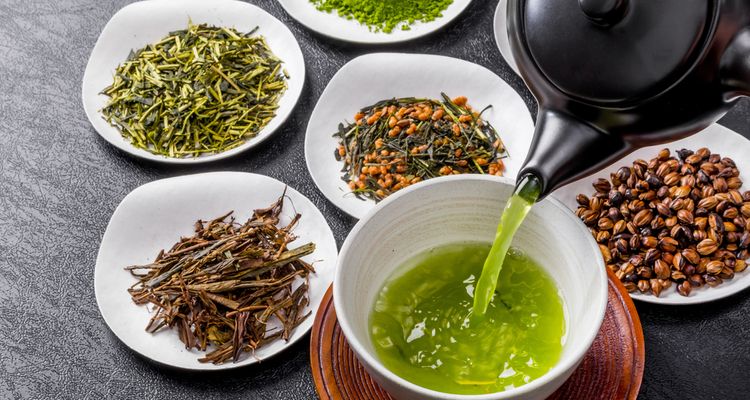Drinking tea is an indispensable part of the cultural and spiritual life of the Japanese people and when it comes to Japanese tea, everyone immediately thinks of matcha (green tea powder). Not only is the tea used in the Japanese Tea Ceremony which is famous all over the world, matcha is also used as an ingredient in the processing of many sweets such as cakes, ice cream, … However, not only matcha, in Japan also There are many other types of green tea such as Houjicha, Gyokuro, Kukicha, … with great benefits such as anti-cancer, anti-aging, lower cholesterol, … If you have the opportunity to come to Japan Why not try These unique teas, you will surely find your own favorite tea flavor as well as typical Japanese gifts for your friends and relatives. Read the article below to learn about the traditional Japanese green teas with Bestechz!
Contents
Explore traditional Japanese green teas
Sencha

Sencha is Japan’s most popular green tea, accounting for about 80% of the tea produced in Japan. Sencha is made from green tea leaves, grown directly in the sun and harvesting the top layers of young leaves. The tea buds after harvest must be steamed immediately to prevent fermentation and prevent oxidation. The tea leaves are then rubbed and dried with hot air until the weight is reduced to about 30%. The tea buds are then crumpled to form conical buds and dried until they are about 20% of their original weight. The steaming of the tea makes the chlorophyll in the tea leaves not decomposed, making the tea buds soft, straightforward, and the tea’s distinctive green color.
Gyokuro

Unlike Sencha tea, Gyokuro is a green tea grown in the shade of a net-covered garden about 2-3 weeks before harvest. The tea leaves that are shaded in the shade inhibit the production of catechins from amino acids, thus making the flavor richer. In addition, this method also helps to keep the green color of the tea leaves, causing the tea to turn emerald green. After harvesting, the tea leaves are steamed and dried about 2-3 times (each for a very short time) then rolled into tiny tea buds. The process of making the Gyokuro tea roll is all hand-made. Gyokuro tea has a stronger aroma and flavor than other regular green teas, so the price is quite high and is considered the most valuable tea in Japan.
Kabusecha

Kabusecha tea (coated tea) is a type of Japanese green tea. The name of this tea comes from the tea growing process, when the tea plants are covered in shade before harvest for about a week to 10 days with straw umbrellas to limit sunlight. The shading process gives Kabusecha tea a softer flavor, aroma and a more subtle color than sencha teas grown under direct sunlight. However, compared to Gyokuro tea, Kabusecha tea is not comparable as it has a shorter shade growing time and is usually harvested by a machine while Gyokuro is usually harvested by hand.
Matcha

Matcha is a famous tea, characteristic of Japan, is the “soul” of traditional Japanese tea ceremony. In addition, matcha powder is also an excellent ingredient for processing dishes such as matcha ice cream, matcha cake, … Matcha is a premium Tencha green tea that is finely ground with a specially designed granite mortar. The finished product should be ground to 50 micrometres and be emerald green in color. Based on the quality of matcha, matcha is classified into different grades. Ranked number one is the high quality tea used in the tea ceremony. Made from the youngest tea leaves (with the entire stem and branches removed), the tea powder is very smooth, bright green in color, with delicate taste, natural sweetness and sold at a price tallest. The next type is the premium matcha made from the young tea leaves of the top of the tree, so the tea powder is smooth and tastes no less than the high quality, only the tea powder is a bit darker green. . Finally, industrial matcha used for food processing, the cheapest with dark green matcha powder and a slightly more acrid taste due to being produced from the tea leaves growing at the bottom of the tea tree.
